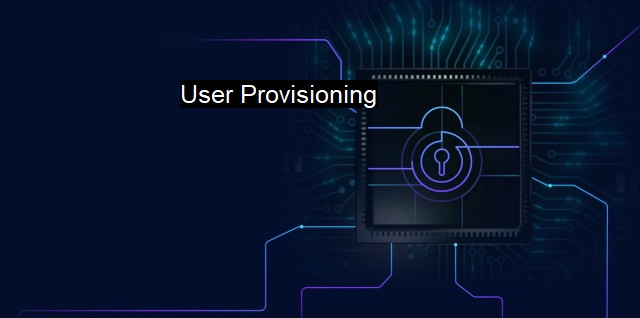What is User Provisioning?
Why User Provisioning Is the Key to a Strong Cybersecurity Strategy in the Digital Age: Streamlining Digital Routing to Enhance Data Management Structure
User provisioning, a key component in cybersecurity and antivirus schemes, refers to the method in which businesses oversee and manage user access to resources, systems, and information. It provides individuals with the access and authorization they require to execute their tasks efficiently and securely. This secure access facilitates organizations to maintain control over their internal and external user activities. The crux of user provisioning is founded on identity management, which accurately determines the access allocation particular users require. Consequently, incorporating this element within the business's overall cybersecurity system is critical in safeguarding against unauthorized accessibility, thereby having a direct positive impact in terms of societal security.User provisioning operates on the basis of user access life cycles, which dictate the type of access users should have at any given time, restricting or granting permissions as circumstances change. To illustrate, a new employee may be given access to several systems necessary for their tasks. As they continue working and their role transitions or evolves, their access may be modified accordingly. User provisioning allows for automatic adjustments according to these changes. In the circumstance where an employee exits the organization, user provisioning ensures immediate termination of their access. This reduces the risk of redundant user access and potential exploitation by malicious actors targeting obsolete or unmonitored accounts.
There are two key facets to user provisioning: initial setup and ongoing management. Initially, accounts must be set up and permissions granted based on individual responsibilities and tasks. Multiple factors determine access level, including job role and security clearance, among others. Then, there is the ongoing management, which involves constant oversight, modification, and revocation of permissions. Regular audits help to ensure this proficiency.
On the flip-side, inefficient user provisioning can result in security loopholes, providing an open invitation to hackers. A usual error includes granting broader access than necessary, termed "over-provisioning." This is a direct infringement on the principle of least privilege (PoLP), a vital guideline in cybersecurity that suggests granting users only what is absolutely essential for their tasks. On the other hand, "under-provisioning" involves not granting enough permissions, which can hamper task-efficiency and productivity. Hence, striking a balance is crucial.
Another vital facet of user provisioning is deprovisioning, signifying revoking user access rights once they no longer require them. Key circumstances include role changes, employee departure, or suspicion of illicit activities. Adequate deprovisioning can prevent security breaches and data exploitation.
The user provisioning process is made seamless through the use of user provisioning software. Such tools automate the process of creating, maintaining, and deactivating users in systems and applications as required. these automatic processes monitor user activities for security threats and generate real-time alerts upon detecting potential breaches or unusual activity. Also, user provisioning tools establish protocols for self-serving password resets or granting temporary access rights. Incorporating automation for this previously manual task greatly boosts operational efficiency and overall business security stance.
User provisioning plays an integral role in cyber risk management, reducing the potential for abuse or misuse of system access privileges. By regulating access to applications and data, businesses can ensure compliance with data governance and privacy regulations, improve system security, and enhance operational productivity. For the antivirus landscape, effective user provisioning involves establishing user roles and rights that are appropriately aligned with each user's need for specific access permissions. strong user provisioning protocols provide a solid foundation for ensuring business security, upholding data integrity and business confidentiality, and maintaining a robust cybersecurity defense mechanism.

User Provisioning FAQs
What is user provisioning in cybersecurity?
User provisioning is the process of creating, managing, and disabling user accounts and access permissions within an organization's network or system. It involves granting users the appropriate level of access based on their roles and responsibilities to ensure a secure and functional computing environment.Why is user provisioning important for cybersecurity?
User provisioning is critical for cybersecurity because it helps prevent unauthorized access to sensitive information, networks, and systems. By ensuring that only authorized users have access to specific resources, organizations can minimize the risk of data breaches, cyber attacks, and other types of cyber threats.What are some common challenges associated with user provisioning?
Some common challenges associated with user provisioning include managing user access across multiple systems and applications, ensuring compliance with industry regulations and policies, and minimizing the risk of human error or misconfiguration. Other challenges include dealing with an ever-changing workforce and managing access requests in a timely and efficient manner.What are some best practices for effective user provisioning?
Some best practices for effective user provisioning include regularly reviewing and updating access permissions based on changes in job roles or responsibilities, implementing multi-factor authentication (MFA) to enhance security, using automation tools to streamline the provisioning process, and ensuring that all user access requests are properly authorized and documented. Organizations should also maintain a record of all user activity and conduct periodic audits to identify potential security risks or compliance issues.| | A | | | B | | | C | | | D | | | E | | | F | | | G | | | H | | | I | | | J | | | K | | | L | | | M | |
| | N | | | O | | | P | | | Q | | | R | | | S | | | T | | | U | | | V | | | W | | | X | | | Y | | | Z | |
| | 1 | | | 2 | | | 3 | | | 4 | | | 7 | | | 8 | | |||||||